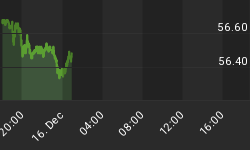1/7/2011 9:02:45 AM
The major indexes closed mixed as the Dow and S&P-500 retreated from overbought levels but the NASDAQ-100 continued to make gains...
Recommendation:
Take no action.
Daily Trend Indications:

- Positions indicated as Green are Long positions and those indicated as Red are short positions.
- The State of the Market is used to determine how you should trade. A trending market can ignore support and resistance levels and maintain its direction longer than most traders think it will.
- The BIAS is used to determine how aggressive or defensive you should be with a position. If the BIAS is Bullish but the market is in a Trading state, you might enter a short trade to take advantage of a reversal off of resistance. The BIAS tells you to exit that trade on "weaker" signals than you might otherwise trade on as the market is predisposed to move in the direction of BIAS.
- At Risk is generally neutral represented by "-". When it is "Bullish" or "Bearish" it warns of a potential change in the BIAS.
- The Moving Averages are noted as they are important signposts used by the Chartists community in determining the relative health of the markets.
Current ETF positions are:
In cash.
Daily Trading Action
The major index ETFs opened higher the moved lower until shortly after 10:00am when they moved higher for about a half hour. Then it was a tale of two markets with the Dow, S&P-500, Russell-2000 and bank indexes moving in see-saw fashion and ending lower while the Semiconductor and NASDAQ-100 finished higher. The Russell-2000 (IWM 78.97 -0.37) lost about a half of one percent while the Dow and S&P-500 losses were more muted. The Semiconductor Index (SOX 424.77 +7.68) was on fire rising 1.8%! which supported a gain of around a third of one percent for the NASDAQ-100. The Bank Index (KBE 26.48 -0.34) fell more than one percent as did the Regional Bank Index (KRE 26.54 -0.37). The 20+ Yr Bonds (TLT 91.86 +0.40) posted a modest gain as it makes a bid to bounce along with the U.S. dollar. The Longer-term bonds (TLT), the Rusell-2000, and the Regional Bank Index all remain in trading states while the other indexes we regularly monitor are in uptrend states. NYSE volume added a bit but was still close to average with 1.092B shares traded. NASDAQ volume was above average with 2.119B shares traded, adding modestly to Wednesday's volume.
There were two economic reports of interest released:
- Initial Jobless Claims for last week came in at 409K versus an expected 405K
- Continuing Jobless Claims came in at 4.103M versus an expected 4.070M
Both reports were released an hour before the open and both roughly met expectations.
The U.S. dollar rose eight tenths of one percent matching its recent high from December 21st. Continued strength in the dollar will break the downtrend in place since November 30th.
Tech (+0.9%) and Healthcare +0.4%) were the only sectors to move higher and the Utilities sector was unchanged. The other seven economic sectors in the S&P-500 moved lower led by Telecom (-2.8%) and Consumer Discretionary (-0.7%).
Implied volatility for the S&P-500 (VIX 17.40 +0.38) rose two percent and the implied volatility for the NASDAQ-100 (VXN 18.41 +0.06) was nearly unchanged.
The yield for the 10-year note fell six basis points to close at 3.42. The price of the near term futures contract for a barrel of crude oil fell $1.92 to close at $88.38.
Market internals were mixed with decliners leading advancers 5:3 on the NYSE and by 5:4 on the NASDAQ. Down volume led up volume 2:1 on the NYSE while up volume led down volume 3:2 on the NASDAQ. The index put/call ratio rose 0.20 to close at 1.29. The equity put/call ratio was nearly unchanged falling 0.01 to close at 0.48.
Commentary:
Thursday saw the Dow and S&P-500 give back from overbought conditions. The NASDAQ-100 was also overbought but was able to notch a gain with the support of the Semiconductors which reached an overbought condition by the close on Thursday. With the dollar at a critical level (resistance of November 30th high) and trying to rally, we get the conditions for a market sell-off. At the same time, longer term bonds could easily break down here still, and the equities markets could continue higher. While we are still expecting a correction, we haven't yet seen the opportunity to get short and we will remain on the sidelines until we do see such an opportunity.
We hope you have enjoyed this edition of the McMillan portfolio. You may send comments to mark@stockbarometer.com.
















